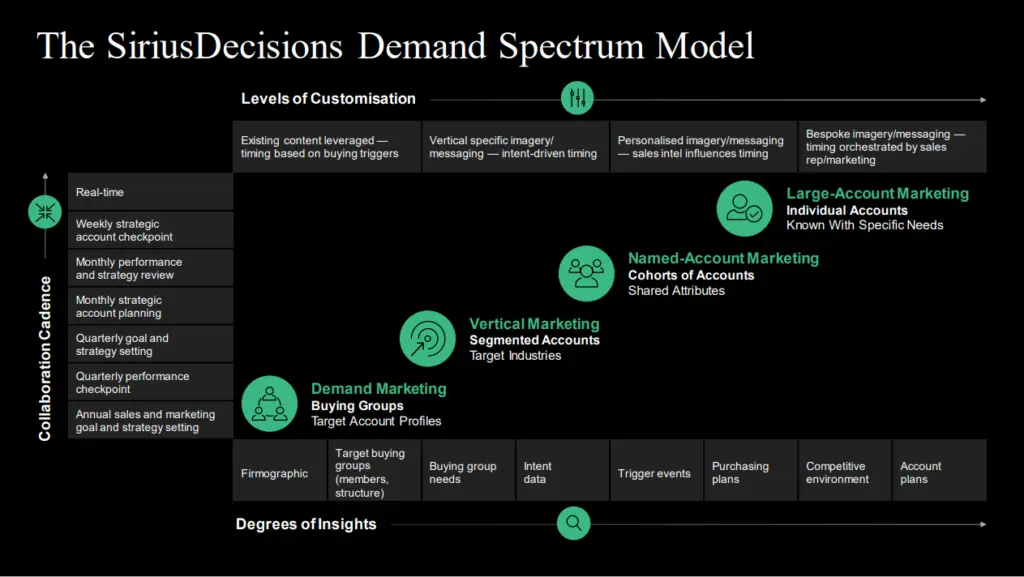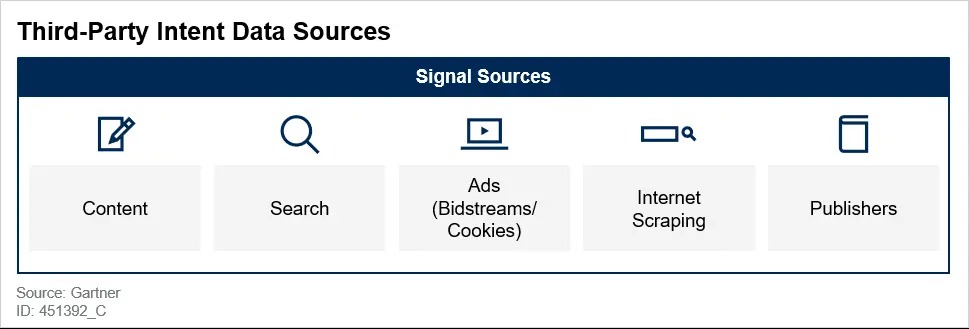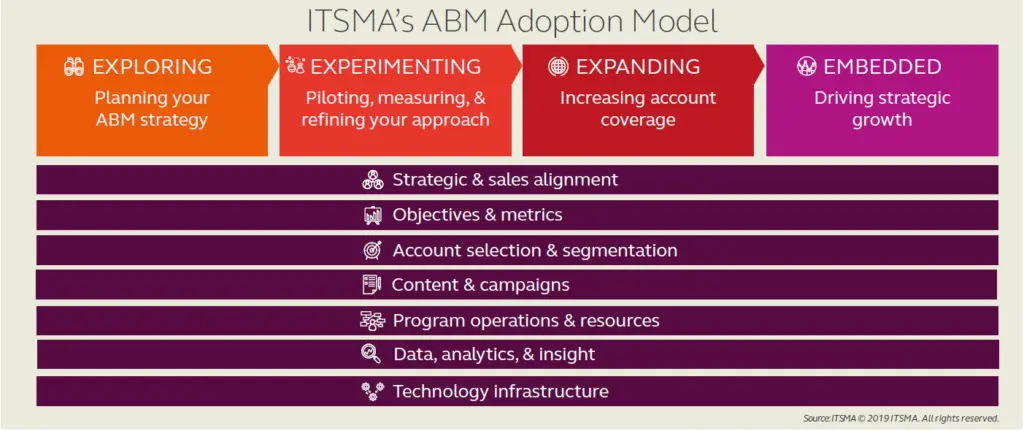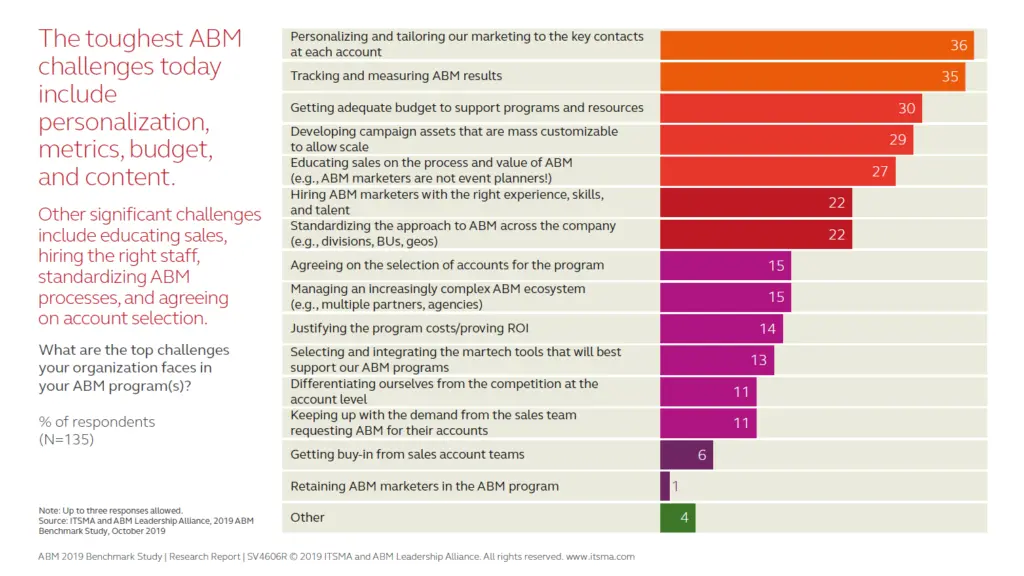Account-based marketing has seen many changes over the last two decades since its inception in 2003. Don Peppers and Martha Roger’s 1993 seminal book ‘The One to One Future’ became the basis for ABM. It took over a decade for businesses to adopt account-based marketing in India.
Technology-enabled ABM began to take shape in 2015, when venture capitalists began investing in firms like Demandbase and Engagio. While large companies embraced the technology in India, they were largely unaware of how to use it. Interestingly, during one of my stints with a major IT conglomerate, they adopted Demandbase but never used it to its full advantage.

Account-based marketing in India existed long before ITSMA created the phrase, although not in its current form. India would have most likely adopted ABM on a large scale in the previous decade, but many would argue against this premise. Most would agree that there is a growing appreciation for the value that account-based marketing adds to a marketer’s arsenal.
ABM Adoption in India: Challenges
1. Skeleton MarTech Stack
Most of us know the core technologies that form a marketing technology stack are CRM, CMS, and Marketing Automation. While we have progressed in our adoption of marketing technologies in India, many companies have a skeleton martech stack. Most companies abroad now have a more robust marketing technology stack that caters to the needs of the business. For example, check Talkwalker’s martech stack, which has been designed to address its customer’s journey below.
![60+ Marketing Tech Stack Examples [2021 UPDATE] - Klint Marketing](https://klintmarketing.com/wp-content/uploads/2020/02/talkwalker-martech-stack-1024x768.png)
Marketing technologies are increasingly getting designed around the flow of data or customer’s journey. But either lack of marketing budget or approval from the senior management restricts companies from adding useful tools to their martech stack.
Annual licensing fees for marketing automation products range between $10,000 and $15,000. ABM platforms have similar or higher pricing, making it a difficult sell internally if they have limited budgets. Additionally, when it comes to B2B marketing, events consume a sizable portion of marketing budgets with legacy brands, thereby blocking a significant portion of their expenditures in advance.
2. Content Marketing Engine
SiriusDecisions Demand Spectrum Model was designed to help marketing teams to tailor their approach to sales strategies. Additionally, the model was created to demonstrate how cross-functional collaboration, content modification, and varying degrees of insight can be used to close sales.

But if you look closely, what really powers the whole model is a content engine that sits underneath the whole program. The movement from running a demand marketing to a large-account marketing program requires a powerful content engine to power it.
Most companies struggle to scale up their content marketing efforts, making it difficult to transition from running a demand generation program to running targeted campaigns for named accounts. The choice then effectively is between scaling your content marketing team or hiring an agency to scale the content efforts.
3. Problems with Intent Data
B2B marketing today increasingly relies on data for precise targeting, personalized messaging, and activation. Companies may use intent data to easily target accounts based on behavioral information, such as topic or context data.
But the more important question to ask is how this data is collected? Intent data providers today either gather data from their own network or a broad set of sources. For instance, 6sense collects its intent data from over 4 million sites and 6 million companies through direct relationships with publishers and data aggregators.

While players Bambora collects this data directly from 3,800 websites that are part of a proprietary B2B Data Co-Op. The dataset monitors more than 3 million domains and 28 billion monthly “consumption events.” They use this data to create a taxonomy of topics that marketers can then access to target accounts.
But here is the challenge with using intent data; let’s say, for instance, you work for Freshworks, and your intent data tells you that employees from Oyo are searching for topics related to helpdesk solutions. But after you run a targeted campaign, you realize that the intent signal was inaccurate.
The likelihood is that the employees searching for the topics were Oyo employees, but not the decision-makers you want to contact. By just knowing that the account has an interest in a certain topic doesn’t help you. Today, many account-based marketing platforms are sold with the promise that intent data will help them close the sale faster. But not everyone believes this to be true.
4. B2B companies in India like events (if not for the pandemic)
I’ve previously worked with a couple of large IT conglomerates, and we all agree that the amount of money spent on events is ridiculous. In fact, the B2B events consume as much as 50-60% of your overall marketing budget. The only logical justification for involvement in such events is that we should participate since the competition will be doing the same.
Globally events only take up nearly 15-20% of the marketing budget, which means Indian companies have a lot more to do when it comes to shifting event budgets to digital marketing and other activities.
The pandemic has, however, been a catalyst when it comes to making this change possible. In 2019, only 10% of B2B firms spent more than 20% of the marketing budget on ABM programs, and 60% spent less than 15%. We can expect those numbers to change, considering companies are moving their events budget to ABM and other digital activities.
Account-Based Marketing in India: What’s Next?
ITSMA’s third annual study conducted in 2019 found that account-based marketing has significantly increased adoption since 2013. The survey also highlighted that companies practicing ABM are now dedicating 29% of their total marketing budgets to these programs.
But the survey only had 7% participants from the Asia Pacific region, which again highlights that very few companies are adopting ABM at scale in the region. That brings us to the question of how marketers can accelerate the adoption of account-based marketing in India?
1. Educate Marketers on ABM
While marketers are practicing ABM in India, there is certainly a need for increased emphasis on training to increase ABM skills among existing marketers. Especially when it comes to technology-enabled ABM, we don’t necessarily have the skill sets compared to our North American counterparts.
The pandemic has certainly accelerated the awareness of account-based marketing. In fact, during a recent conversation Arun Gopalasawami, Co-Founder and CEO of Recotap, mentioned, “Compared to North America and the western European market, India is 2-3 years behind the ABM adoption curve. The Pandemic has brought significant awareness to ABM in India. ABM is practically on every CMO’s agenda today. The question we used to face has gone from Why ABM to How do I start ABM?”
2. Adoption Model for ABM
ITSMA’s ABM Adoption Model is certainly a starting point for companies to test their waters with account-based marketing. The ABM strategy has to be co-developed by sales and marketing by working together as a joint team.

Once the goals and objectives are set, you can adopt one of the three account approaches developed by ITSMA, which are strategic (one-to-one), lite (one-to-few), and programmatic (one-to-many). The key is to start a small PoC and scale your ABM efforts as you learn what works for your business.
3. Preparing for ABM Challenges
Some of the toughest ABM challenges you will face as you develop your ABM program include personalization, metrics, budgets, and content. Nearly 38% of marketers have difficulty when it comes to personalizing and tailoring their marketing campaigns to key contacts at each account. It, therefore, becomes critical that you work closely with your sales team to gather as much information as possible about the accounts to personalize your messaging.

The second-largest difficulty marketers in India are likely to encounter is securing sufficient funding to sustain ABM initiatives and resources. You have to set a realistic expectation on how much ROI ABM will generate to make sure you have enough budget to sustain your ABM activities.
Last and the most important challenge to address is to develop a content engine that supports all your account-based marketing efforts. Without having a content engine in place, don’t even think about creating an ABM program.
Final Thoughts
There is no doubt in mind that account-based marketing is set to grow in India. The future of account-based marketing platforms appears bright, as technology-enabled ABM will gain traction as sales engagement tools and intent data become more prevalent. The problems we encounter from an Indian context are unique, and I’m confident that how India’s ABM platforms solve those challenges will be distinctive.
